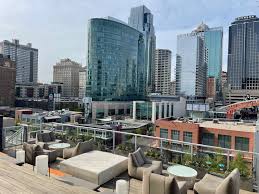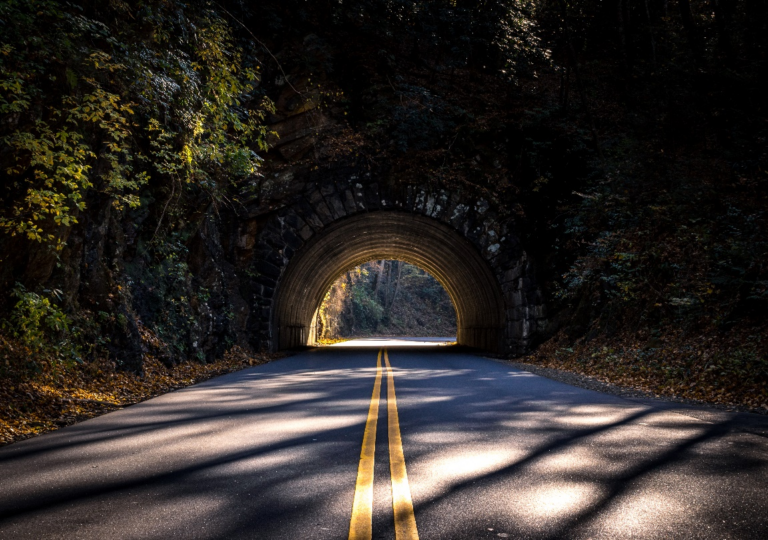
Urbanisation and Sustainability- Can Megacities become eco-friendly?
On April 18, 2024, the Chief Minister of Karnataka, Siddaramaiah made an official statement regarding the water scarcity faced by the city. As per his words, the IT hub of India was staring at a deficit of around 500 million litres of water every single day. That is about one-fifth of the water requirement for the city.
A political firestorm erupted in the city even as 13 million Bangaloreans were compelled to entrust their water supply to the credibility of private water tankers. The bustling IT culture also suffered from unprecedented setbacks second only to the havoc during the COVID-19 Pandemic. Techies were advised by their companies to work from their hometowns in order to reduce the water demand on the city. This was but one incident when nature failed to cater to the needs of relentless urbanisation.
In the case of Bangalore, the reason behind the water shortage could be largely attributed to a few select factors. The first and foremost was the below average monsoons received by the city. Experts have recorded at least 18 percentage points lower rainfall in 2023 as compared to 2022 making it the lowest rainfall in the city since 2015.
Additionally, the underwater reservoirs of South India are of a rocky nature which greatly decreases the water holding capacity of the soil. Such reservoirs require yearly refilling by adequate rains to be of any value to the residents. A lacklustre monsoon coupled by a rocky water aquifer system brought the megacity to its knees. However, what really aggravated things was the sheer population and urbanisation of Bangalore.
The 2023 season saw most Southern States like Telangana and Maharashtra suffering from poor rainfall even as Kerala recorded the maximum depreciation with a 34 point deficit. Yet none of the main cities or urban centres in these states were affeccted by water shortage nearly as much as Karnataka.
This points to the over-urbanisation of Bangalore and the failure to develop an urban centre in line with the limitations of the environment. In the 10 years between 2011 and 2021, Bangalore lost around 5 sq km of forest cover and currently a meagre 6.8% of the city is forested, down from 7.2% in 2011.
The evolution of mankind has revolved around the gradual development of the forebrain which greatly augmented the speech and expression abilities. From being able to convey basic emotions to writing down complex theses and stories, humans have come a long way. This eventually designed the lives of humans around the formation of societies with the earliest example dating back to 17,000 BC at the Ohalo site near the Sea of Galilee.
These dwellings were a mere collection of huts where a small human community is believed to have flourished. The Harappan Civilization that existed during the bronze age was spread across an area of 150 hectares and could accommodate upto 23,500 residents at a time. For a human settlement between 2600 BC and 1900 BC, the population of the city is believed to be awe-inspiring.
Over the years, human beings continued to coalesce with each other and form even larger communities. Humans built houses, then small societies, villages, towns, cities and then Megacities. Today, in 2024, the most populous city in the world is Tokyo, the capital of Japan which is called home by approximately 37 million people.
As humans continued to make advancements in the fields of science and technology, the life expectancy of an average human being enjoyed a rapid growth through the centuries. In 1900, the average life expectancy of man was around 46 years. A century later it would be 73.4 years. As the world population continued to grow, a severe stress was palpable on the environment. Cities failed to meet the demands of the population. In 2024, one pressing question continues to linger- Is it possible for these Megacities to sustain themselves?
Sustainable city refers to one that is adept at handling the environmental and economic impact caused by urbanisation. The list of the most sustainable cities in the world are dominated by Scandinavian nations. With a population of around 700,000 inhabitants, Oslo occupied the top spot in the 2022 Arcadis sustainable cities rankings. One of the features that helped the Norwegian city achieve this position was the emphasis on green cover. About 47% of the City is green with numerous parks, forests and lakes making their mark over the landscape. This is in stark contrast to the condition of Bangalore.
Trees and vegetation help in filtering the air pollutants as the city managed to meet the WHO standards for air pollution. Oslo has also decreased their reliance on fossil fuels as around 60% of the city’s electricity needs are furnished by renewable sources like hydro power. By promoting biogas for domestic use and implementing a system of zero emission public transportation, the city has greatly cut down on their carbon footprint even as they are vying for the Zero Carbon emission crown by 2030.
The example of the Norwegian city shows that sustainability is still very much a possibility. The key features include focus on maintaining adequate green cover and decreasing reliance on fossil fuels. Trees also help in preventing groundwater levels from dipping too much and permit only small temperature fluctuations.
However, Oslo’s quest to be the most sustainable mega city in the globe has been bolstered by the much modest population of Norway. With just 15 people per square kilometres, the Scandinavian nation also has one of the lowest population densities on the globe, much of it being attributed to the ever-pervading hostile environment.
In most other developing nations in Asia and Africa, high population growth rates have been recorded over the years even as most of the younger generation flock to the urban centres for employment. Cities being the centres of trade and research provide better work opportunities and payment as compared to the ones in rural areas.
Within Asia, the best road map towards sustainability amidst rapid urbanisation has been laid by Tokyo. Housing around 13 million people within the city itself and another 24 million in the surrounding metropolis prefectures, the capital of Japan has managed to create a near-perfect harmony between the environment and the 6,158 people who live per square kilometre of the city. Much of the success has come from understanding the dynamics of the environment and exploiting its constituents to negate the disastrous effect caused by urbanisation.
In Ginza, one of the most posh areas of Tokyo, the residents have found their answer to sustainability in the form of bees. In 2006, the Ginza Honey Bee Project was launched with 10 volunteers and 30,000 honey bees. A decade and half later, the organisation has grown to include 500 people and produces 2000 kilograms of honey every year. This created a micro-environment of self-sustainability within the city as several restaurants, bars and local businesses have become linked to this supply chain.
The honey that is not used for consumption can be processed into cosmetics, lip balms, soap and wax. Bees also greatly benefit the environment by fostering pollination of plants and improving the green cover. Many big cities have been facing the problems of animal extinction due to habitat destruction. Going by the rule of the food chain, animals higher up are usually more prone to extinction than the ones at the bottom. Birds have been the most notable victims of urbanisation. Since 1968, 20 species of birds have gone extinct in the US alone with 8 of them from the island of Hawaii.
This was attributed to the massive urbanisation supported by a tourism boom on the island. The Passenger pigeon, the Po’ouli and the Indian vulture all fell prey to unabated habitat destruction. Bees can however prove to be a solution as they are often part of the diet of smaller birds who are eventually fed upon by the larger birds of prey. This shows that the collective effort of a few hundred people working along the lines of the environment can do wonders.
As the world continues to move forward, cities keep growing even as their population swells to alarming levels. Most developing nations in the world find themselves caught between promoting urbanisation and protecting the environment. In order to provide better livelihood to its people, the nation has to make hard decisions that prove to be detrimental to the environment. However, such development comes at a price.
With the environment getting damaged every day, the foundations of a nation’s future rests on weak ground. Its ability to handle stress decreases and even the tiniest of anomalies could end up having far-reaching consequences. It is for this reason that it is important to have a balanced development of a nation.
Between 2022 and 2023, the household spending for rural India stood at 3,773 rupees while the urban households spent 6,459 rupees. This shows a near double spending capacity of urban India than their rural counterparts thus, pointing to unbalanced development. This causes young graduates to migrate to the city for jobs, flooding the urban centres while the villages become a retiring space for the elderly.
In order for cities to be sustainable, the constant strain on it due to the ever-increasing population has to be relieved by developing villages and towns. Every graduate that stays back in his hometown is another demand that doesn’t have to be fulfilled by a megacity. Another option is by creating satellite cities.
Mumbai is the most populous city in India holding a staggering 23 million Mumbaikars as per 2016. However, the population of core Mumbai is just around 12 million. This is because of the presence of 3 major satellite cities Thane, Dombivli and Navi Mumbai. These were planned to reduce stress on the badly choked financial capital of India.
Thus, a combination of smart solutions and better national planning can help make Megacities more environmental friendly. There is however, another solution which tests the very limits of human technology. The United Arab Emirates is a tiny nation on the Arabian Peninsula. However, this Arab state is one of the richest nations in the world and is home to some of the most enthralling cities- Dubai, Abu Dhabi and Sharjah.
With a population of over 3 million Dubai is the capital and the most populous city of the UAE. However, its location in the middle of a desert doesn’t do any justice. The city suffers from one of the most extraordinary water stresses in the world as most of the supply is secured from groundwater reservoirs. With a desert limiting the growth of the city and the nation, the city’s rich leaders found a different, more unorthodox solution.
Since the 1980s, UAE has been testing cloud seeding technology in its realm. This methodology releases aerosols into the atmosphere which fosters cloud formation eventually resulting in rainfall. The residents of the city are warned days in advance about the impending rainfall in a bizarre case of weather forecasting. This is the ultimate form of sustainability when nature is made to bend as per the requirements of humans. By improving the abilities of nature to provide, the UAE has managed to support its growing population.
In modern times, development has to happen hand in hand with the environment. Hence, it is important to understand the limitations of the same and work proactively towards the development goals of the nation. For mega cities, becoming sustainable is not an option but rather a necessity as any other way of development will negatively affect the efficiency of the metropolis. One small group of islands provides an apt warning for the same.
The Easter Islands are a set of islands off the coast of Chile and were discovered by Polynesian settlers who came on wooden canoes. They built a large number of Moai statues across the islands crafted from the wood of the few trees that grew there. However, by the 17th century, the inhabitants had deforested most of the land and had now run out of an important source of fuel as well as architecture. This eventually caused a collapse of the government and hastened a tedious conflict that marred the people for years. Thus, it can only be together with the environment that mankind would be able to strive towards a beautiful future.
By: Aratrik Tarafdar
Write and Win: Participate in Creative writing Contest & International Essay Contest and win fabulous prizes.


